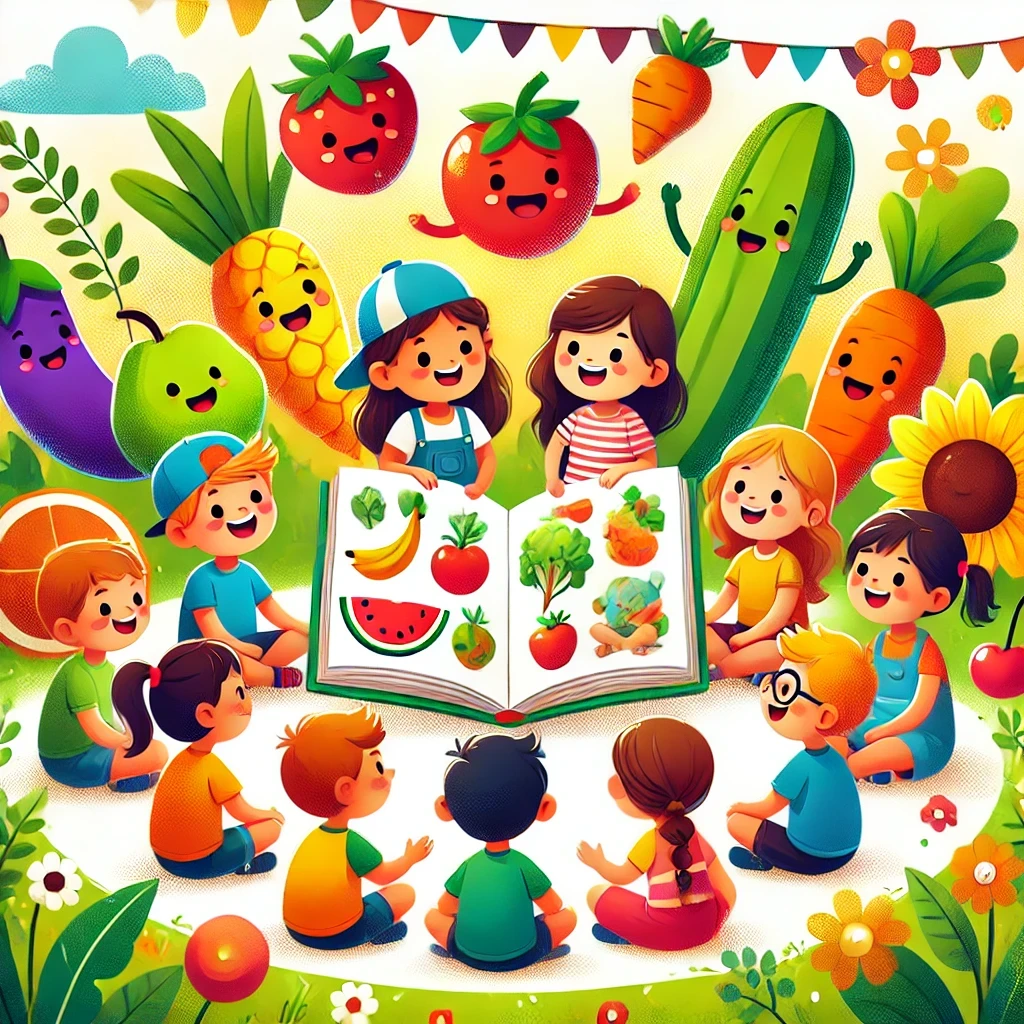Educating children about healthy eating habits is crucial for their growth and development. One effective and engaging way to impart nutritional literacy is through storytelling. Stories can make learning about nutrition fun and memorable, helping children understand the importance of making healthy food choices. Here’s how to teach healthy eating through stories and some recommended books to get started.
1. The Power of Storytelling in Nutritional Literacy
Engaging and Relatable: Stories captivate children’s attention and make complex concepts more relatable. Characters and narratives can illustrate the benefits of healthy eating in a way that resonates with young readers.
Memorable Lessons: A well-told story can leave a lasting impression. By embedding nutritional lessons within a narrative, children are more likely to remember and apply what they’ve learned.
Encouraging Curiosity: Stories can spark curiosity about different foods and their benefits, encouraging children to try new, healthy options.
2. Key Elements of Nutritional Stories
Healthy Characters: Introduce characters who model healthy eating habits. These characters can be role models that children look up to and want to emulate.
Educational Plots: Craft stories that incorporate nutritional lessons naturally within the plot. Avoid making the story feel like a lecture; instead, weave the lessons into the characters’ adventures and challenges.
Interactive Elements: Include questions, activities, or discussions within the story to engage children actively. This can help reinforce the nutritional messages and make the learning process interactive.
3. Recommended Books for Teaching Healthy Eating
1. The Very Hungry Caterpillar by Eric Carle
-
Synopsis: This classic tale follows a caterpillar who eats a variety of foods, highlighting the importance of balanced nutrition. The story ends with the caterpillar transforming into a butterfly, symbolizing the benefits of healthy eating.
-
Key Lessons: Balanced diet, eating in moderation
2. I Will Never Not Ever Eat a Tomato by Lauren Child
-
Synopsis: Lola is a picky eater, but her brother Charlie uses creativity and imagination to make healthy foods appealing. This story encourages children to try new foods in a fun way.
-
Key Lessons: Trying new foods, creative thinking about food
3. Good Enough to Eat: A Kid’s Guide to Food and Nutrition by Lizzy Rockwell
-
Synopsis: This book combines engaging illustrations with educational content, explaining nutrients, the food pyramid, and healthy eating habits. It’s a great resource for children to learn about the benefits of different foods.
-
Key Lessons: Nutrients, balanced diet, food groups
4. Green Eggs and Ham by Dr. Seuss
-
Synopsis: Through playful rhymes and whimsical illustrations, this story encourages children to be open to trying new foods, even if they seem strange at first.
-
Key Lessons: Openness to trying new foods, overcoming food aversions
5. Eat Your Colors! by Amanda Miller
-
Synopsis: This colorful book teaches children about the benefits of eating a variety of fruits and vegetables, emphasizing the importance of a rainbow diet.
-
Key Lessons: Variety in diet, importance of fruits and vegetables
4. Tips for Integrating Nutritional Stories into Learning
Read Together: Make storytime a regular part of your routine. Reading together can provide opportunities to discuss the nutritional lessons and relate them to your child’s daily life.
Hands-On Activities: Pair stories with hands-on activities, such as cooking a recipe from the book or creating a food diary. These activities can reinforce the lessons and make learning more interactive.
Discussion Questions: After reading, ask questions to encourage critical thinking and personal connections. For example, “What healthy foods did the caterpillar eat?” or “How did Charlie make Lola want to eat tomatoes?”
Create Your Own Stories: Encourage children to create their own stories about healthy eating. This can be a fun and creative way for them to internalize nutritional concepts and express their understanding.
5. The Role of Parents and Educators
Model Healthy Eating: Children often imitate the behaviors of adults. By modeling healthy eating habits yourself, you reinforce the messages in the stories and show that nutrition is important.
Provide a Variety of Foods: Expose children to a wide range of healthy foods. The more familiar they are with different fruits, vegetables, and whole grains, the more likely they are to try and enjoy them.
Encourage Positive Attitudes: Promote a positive attitude towards food and eating. Avoid using food as a reward or punishment, and instead focus on the enjoyment and benefits of healthy eating.

Conclusion
Teaching healthy eating through stories is an effective and enjoyable way to impart nutritional literacy to children. By integrating engaging characters, educational plots, and interactive elements, stories can make learning about nutrition fun and memorable. With the support of parents and educators, children can develop a lifelong appreciation for healthy foods and the knowledge to make nutritious choices. Incorporating nutritional stories into regular reading and activities can lay a strong foundation for a healthy future.
